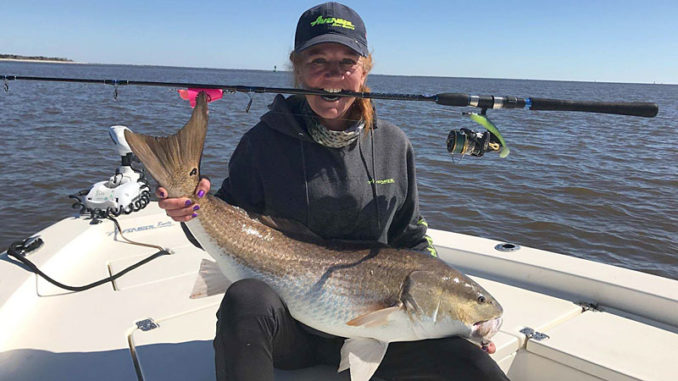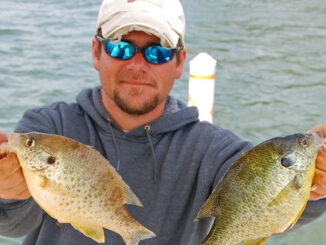
Versatile popping-cork rigs can be used to target almost any inshore gamefish
When it comes to inshore fishing, many anglers agree that it’s tough to beat a popping cork, and that goes for whether you’re fishing with live bait or artificial lures. Popping corks can produce fish at any time, but they really shine when all other methods are failing to consistently catch fish.
The basic setup is a cork, a leader anywhere from 12 to 24 inches long and a soft-plastic lure or hook with live bait. You make a cast, allow the lure or bait time to sink to its maximum depth, then give the rod tip a quick twitch. This “pops” the cork, moving it toward the boat while pulling the lure or bait up toward the surface behind it. What comes next can be critical.
“A lot of times, anglers just continue popping the cork without thinking much about how long to pause between each pop,” said guide Gifford Scott of SC Flats Fishing in Charleston, S.C. “But what you really want is to allow enough time for your lure or bait to sink again to its maximum depth before your next pop. And that will vary depending on how long your leader is. It can also vary according to the weight of your bait, as well as the strength of the current.”
Pause how long?
A low-tech way to determine how much time to pause each time you give your cork a pop is to test it beside the boat, allowing you to see your lure or bait sink. Count it down, then pop it and count it down, then pop it again. You might vary this slightly once you get into it, but that’s where you want to start.
“I don’t like the lure to sit still under the cork at all. Once the lure settles and makes a very brief pause, I want it moving again,” said Scott (843-412-6429). “If I’m using live bait, I don’t mind it sitting another second or two, because it can move freely and attract fish on its own. But with an artificial lure, I want it to stay on the move other than that very brief pause.”
Scott likes to use a D.O.A. shrimp under his popping cork, and he uses either medium or medium-heavy rods with 2000 to 2500 series spinning reels.
When it comes to popping corks, anglers have never had so many options. Cigar-shaped corks make a little less noise and disperse the least amount of water. These are often the best bet on calm days when a little noise goes a long way. Corks with concave heads that resemble a popping lure disperse a lot more water and make a louder gurgling or gulping sound. These can be deadly when the water is choppy, a lot of wind is present, or the tide is running particularly strong.
Seeing red
Rod Thomas of Capt. Ponytail Guide Service uses popping corks for big redfish from North Carolina’s Pamlico Sound down to Georgetown, S.C. He prefers big, concave corks paired with 4-inch soft-plastic swimbaits, a stout rod, 50-pound line, and a 5000 series spinning reel with heavy drag.
“A lot of folks think popping corks are only good in shallow, inshore waters. But this is a great technique for open water when chasing bull redfish. You want to really pop the cork, almost violently. That’s when I get the majority of my bites. Some days I fish this way exclusively and don’t even worry about having live bait. And my clients say they’d rather catch one big redfish in this manner than catch 10 on live bait,” said Thomas (336-240-5649).
When to use?
Popping corks are effective in a variety of situations. Guide Addison Rupert of Low Country Outdoor Adventures in Charleston, S.C., often uses one in shallow, oyster-lined waters for flounder.
“The popping cork keeps the lure or bait just barely above the oysters, so you’re able to attract the flounder without getting hung up,” he said.
One of Rupert’s favorite areas to use a popping cork is where a small creek empties into a main waterway.
“Trout and redfish, especially, will hang around areas like that, waiting for an easy meal to get washed their way. Popping the cork there will alert them, then they’ll see your lure or bait as you work it through that moving water,” said Rupert (843-557-3476).





Be the first to comment